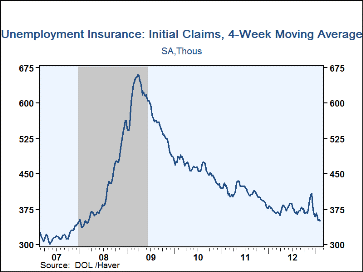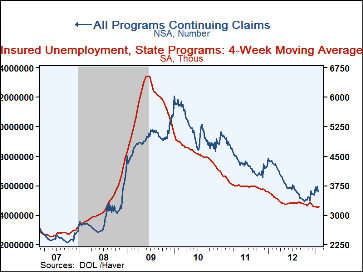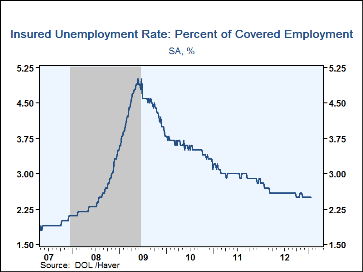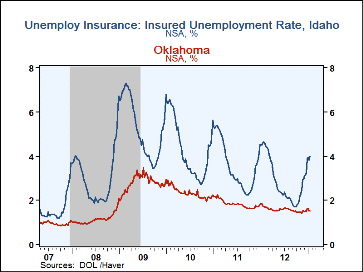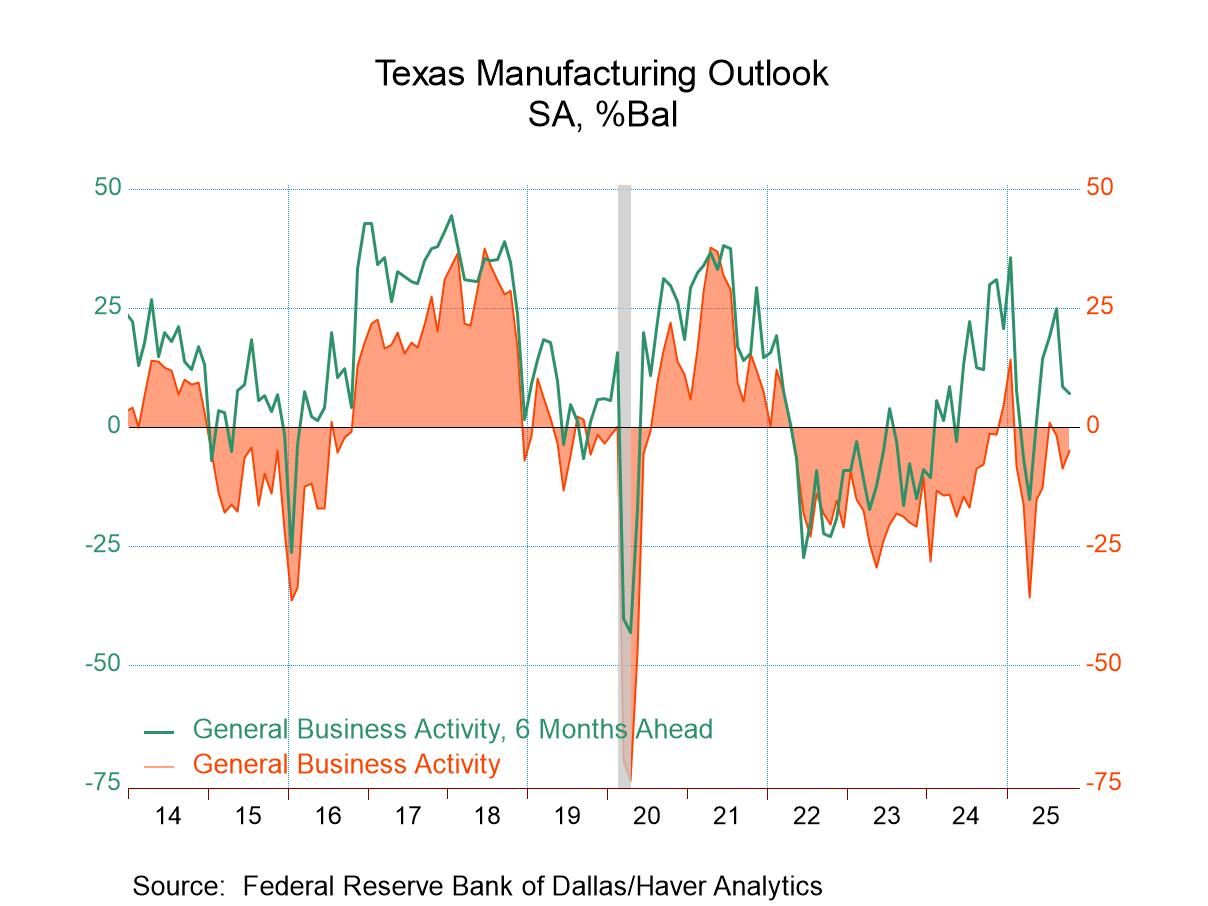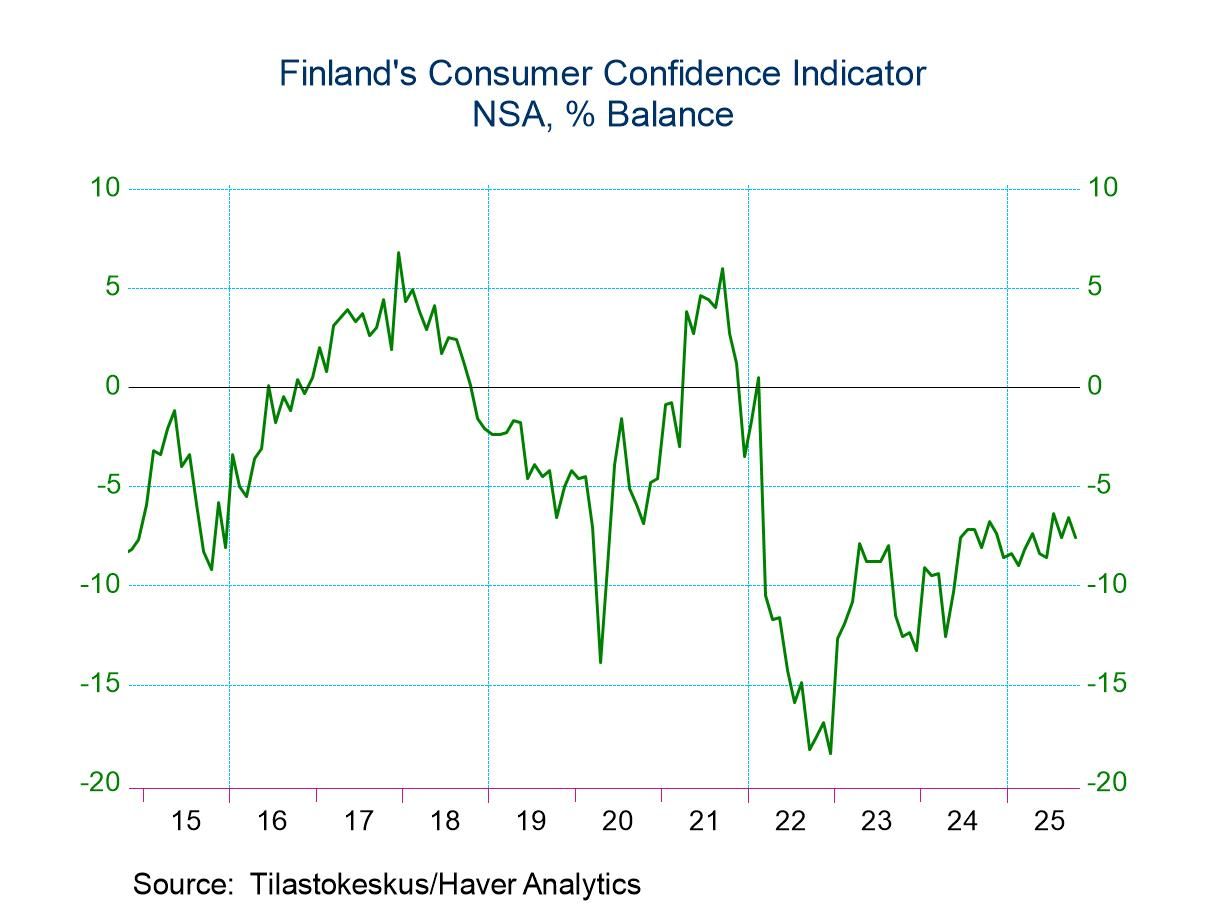 Global| Feb 07 2013
Global| Feb 07 2013U.S. Initial Claims for Unemployment Insurance Trend Lower
by:Tom Moeller
|in:Economy in Brief
Summary
The rate of improvement in the labor market is rising. Initial claims for unemployment insurance notched down to 366,000 (-1.3% y/y) during the week ended February 2 versus a revised 371,000 a week earlier, reported initially as [...]
The rate of improvement in the labor market is rising. Initial claims for unemployment insurance notched down to 366,000 (-1.3% y/y) during the week ended February 2 versus a revised 371,000 a week earlier, reported initially as 368,000. Consensus expectations were for 360,000 claims. The four week moving average of claims fell to 350,500, a new low for the economic recovery. During the last ten years, there has been a 75% correlation between the level of claims and the m/m change in nonfarm payrolls.
Continuing claims for unemployment insurance in the week ended January 26 ticked up to 3.224M (-8.3% y/y). Here again, however, the four week moving average of continuing claims was down in January and near the recovery's low. The insured rate of unemployment held at 2.5%, near the lowest level since July 2008. This particular count covers only "regular" programs and does not include all extended benefit and other specialized jobless insurance programs. In the week of January 19, the latest figure available, the grand total of all benefit recipients rose to a not seasonally adjusted 5.590M, down 27.1% from a year ago. That compares to a cycle peak of 12.060M in January 2010.
By state, the insured unemployment rate continued to vary greatly with South Dakota (1.21%), Oklahoma (1.53%), Virginia (1.56%), Florida (1.69%) Texas (1.68%), Tennessee (2.05%), Indiana (2.28%) and Ohio (2.51%) at the low end of the range. At the high end were California (3.37%), New York (3.38%), Michigan (3.62%), Massachusetts (3.68%), Illinois (3.70%), Idaho, (3.98%), New Jersey (4.14%) and Pennsylvania (4.24%).
Data on weekly unemployment insurance are contained in Haver's WEEKLY database and they are summarized monthly in USECON. Data for individual states are in REGIONW. The consensus estimates come from the Action Economics survey, carried in the AS1REPNA database.
Long-term Unemployment: What Do We Know? from the Federal Reserve Bank of San Francisco can be found here.
| Unemployment Insurance (000s) | 02/02/13 | 01/26/13 | 01/19/12 | Y/Y % | 2012 | 2011 | 2010 |
|---|---|---|---|---|---|---|---|
| Initial Claims | 366 | 371 | 330 | -1.3 | 375 | 409 | 459 |
| Continuing Claims | -- | 3,224 | 3,216 | -8.3 | 3,318 | 3,744 | 4,544 |
| Insured Unemployment Rate (%) | -- | 2.5 | 2.5 | 2.8 (1/12) |
2.6 | 3.0 | 3.6 |
| Total "All Programs" (NSA) | -- | -- | 5.590M | -27.1 | 6.047M | 7.750M | 9.850M |
Tom Moeller
AuthorMore in Author Profile »Prior to joining Haver Analytics in 2000, Mr. Moeller worked as the Economist at Chancellor Capital Management from 1985 to 1999. There, he developed comprehensive economic forecasts and interpreted economic data for equity and fixed income portfolio managers. Also at Chancellor, Mr. Moeller worked as an equity analyst and was responsible for researching and rating companies in the economically sensitive automobile and housing industries for investment in Chancellor’s equity portfolio. Prior to joining Chancellor, Mr. Moeller was an Economist at Citibank from 1979 to 1984. He also analyzed pricing behavior in the metals industry for the Council on Wage and Price Stability in Washington, D.C. In 1999, Mr. Moeller received the award for most accurate forecast from the Forecasters' Club of New York. From 1990 to 1992 he was President of the New York Association for Business Economists. Mr. Moeller earned an M.B.A. in Finance from Fordham University, where he graduated in 1987. He holds a Bachelor of Arts in Economics from George Washington University.


